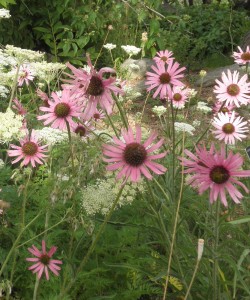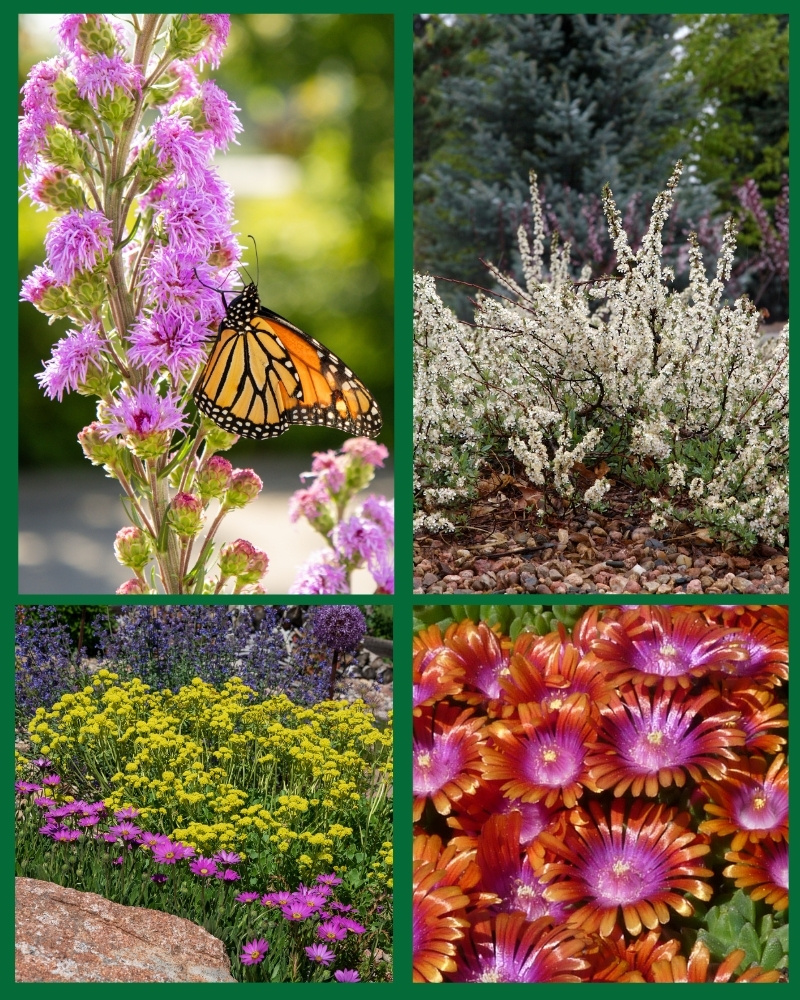A conservation success story: Tennessee purple coneflower
Tennessee purple coneflower, like other coneflowers, has beautiful daisy-shaped flowers, is a butterfly magnet, and thrives in hot, dry, sunny weather. Unlike most coneflowers, it spent 32 years on the US Fish and Wildlife Service’s Endangered Species list. Because of conservation efforts, it was removed from this list in 2011.
Echinacea tennesseensis is endemic to a specific habitat within a 14-mile radius covering three counties in the Nashville, Tennessee area. This habitat, called a limestone cedar glade, develops in red cedar forests where limestone bedrock close to the surface renders the soil too shallow for woody tree roots. This creates openings, or glades, in the forest, similar to wide open prairies. These areas tend to be wetter in the winter and spring, then quite dry throughout the summer. This coneflower was able to thrive in that area because its tap root could work its way down through fissures in the limestone to access deeply-seated moisture. However, the rapid expansion and development of the Nashville area and its suburbs in the mid to late twentieth century became an immediate threat to this habitat and the Tennessee coneflower.
Echinacea tennesseensis was added to the Endangered Species list in 1979–only the second plant to be added. After being added, public and private entities teamed up with state and federal entities to create and implement a conservation plan. The existing coneflower populations were supplemented and protected, and the threats were neutralized.
It seems that positive environmental reports are few and far between. Tennessee coneflower’s story is one that we can enjoy, and now that it no longer needs protection, you can add this beautiful North American native to your own garden.
The purplish-pink ray flowers are erect, whereas some coneflower rays droop, or are reflexed. But most importantly, the flowers always face east. Keep this in mind at planting time and make sure those storied blooms are facing you when they open.
Tennessee Purple Coneflower (Echinacea tennesseensis)
Perennial
Height: 18 – 24”
Width: 15 – 18”
Blooms: June – August
Sun: Full sun to partial shade
Water: Moderate to dry
Hardiness: USDA zones 5-6 (up to 8150′ elevation)
Culture: Sandy soil, clay, loam
Thanks to Sonya Anderson, Denver Botanic Gardens for writing this piece.




I love Echinacea very much. I live in north east of England and am not sure when to sow seed. I have little heating on in the house. I think I should wait until the weather is warmer and I get heat from the sun. Please advise me. John
You should be able to start those plants inside and move them to the out doors after last frost.
[…] the years, the Act has saved endangered animals—and crops—such because the bald eagle and the Tennessee purple coneflower. Listed here are simply 8 (of the greater than 200) animals and crops that depend on the Endangered […]
I have it growing and reliably coming back every year (the past three) at 9000′ in Summit County, Colorado.
At my school in my hometown, we had a prairie preserve area. Every year, they’d take the students out to harvest seeds for the purple coneflower which were used in the effort to restore it. I feel good to have been able to be a part of it.
[…] Preserving the exceptional natural features of the Little River Canyon is a crucial aspect of the preserve’s mission. This best places to go in Alabama for the weekend is acknowledged as one of the Southeastern United States’ most profound canyons. Visitors can expect to see stunning waterfalls, rock formations, and a variety of plant and animal life. This includes the rare and endangered Tennessee Purple Coneflower. […]
This beautiful plant has made it commercially in Spain ,I have it growing great